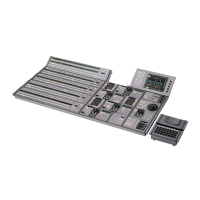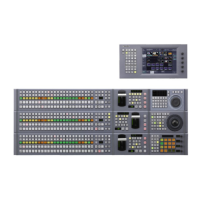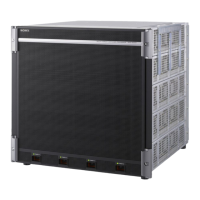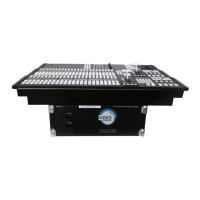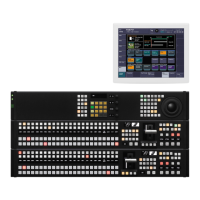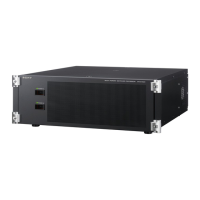Creating and Editing Keyframes 457
Chapter
13
Keyframe
Effects
Signals forming part of the background for
a DME wipe
For a two-channel mode page turn, page roll, brick, frame
in-out, and so on, the part of the pattern shown in gray is
filled with the signal selected on the DME external video
bus.
For three-channel mode brick, the part of the pattern
shown in dark gray is filled with the DME external video
signal, and the light gray portion with the signal selected as
follows.
For details on the pattern, see “DME Wipe Pattern List”
in Appendix (Volume 1).
For a DME dedicated interface
•
When the DME channel used is 3 or 4, the signal
selected on the DME utility 1 bus.
•
For channel 7 or 8, the signal selected on the DME utility
2 bus.
For a DME SDI interface
Signal selected on the AUX bus assigned in the
Engineering Setup >Switcher >Device Interface >DME
Type Setting >DME SDI interface menu. The AUX bus is
determined by which DME channel is being used.
Notes
The DME channel selected as the reference region (lit
green) in the numeric keypad control block is reflected
in the <Transition Mode> group display.
Keyframe Creation and Editing in the
Multifunction Flexi Pad Control
Block
To create and edit a keyframe in the Multifunction Flexi
Pad control block, press the [EFF] button to switch to
effect operation mode, then press the [EDIT ENBL]
button.
The [EDIT ENBL] button lights red, and the memory
recall section switches to the effect editing mode as shown
in the following illustration.
•
Buttons in the memory recall section in effect editing
mode (first page)
Press the [PAGE 1/2] button to switch to the next button
display.
Notes
For the SDI interface on the DME, in some cases the AUX
bus is used in place of the DME external bus (see page
634).
Setting the transition mode
1
In the Key Frame menu, select HF4 ‘DME User
PGM.’
The DME User PGM menu appears.
2
In the <Transition Mode> group, select the transition
mode according to the DME wipe action.
Single: select single transition mode.
Flip Tumble: select the flip tumble transition mode.
Dual: select dual transition mode.
P in P: select picture-in-picture mode.
Compress: select compress mode.
Frame I/O: select frame in-out transition mode.
Frame I/O H: select frame in-out transition mode in
the horizontal direction.
Frame I/O V: select frame in-out transition mode in
the vertical direction.
For details of creating an effect for user
programmable DME, see “Creating User
Programmable DME Patterns” in Chapter 6 (Volume
1).
•
Buttons in the memory recall section in effect editing
mode (second page)
Press the [PAGE 2/2] button to switch to the previous
button display.
In this mode, you can carry out keyframe creation and
editing, using the following buttons.
[EXIT] button: Forcibly exit editing mode.
[UNDO] button: Undo the last keyframe insertion,
modification, deletion, paste or other operation.
[PAUS] button: Add a pause setting to a keyframe (see
page 453).
[COPY] button: Copy a keyframe (see page 452).
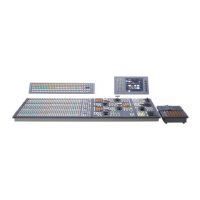
